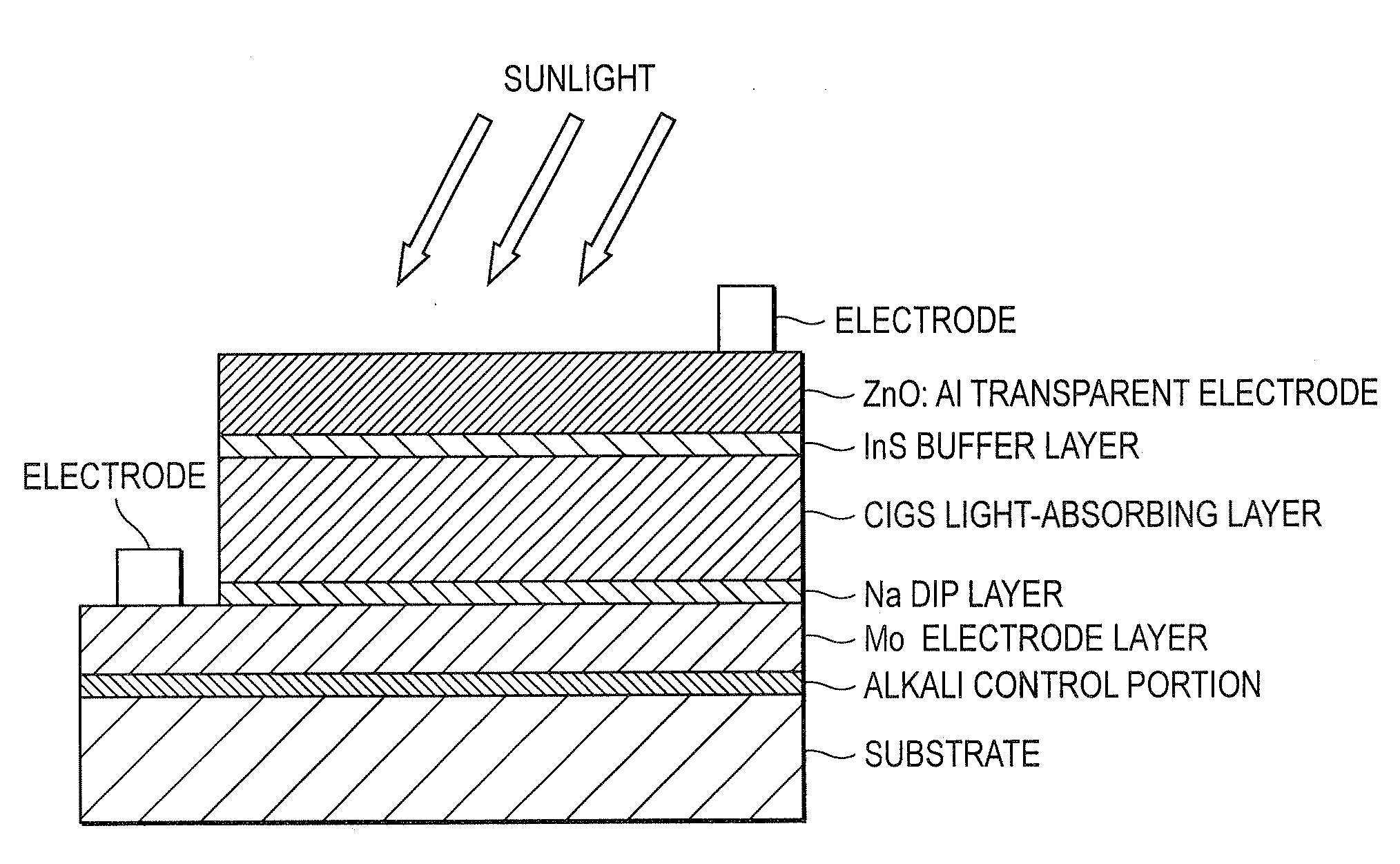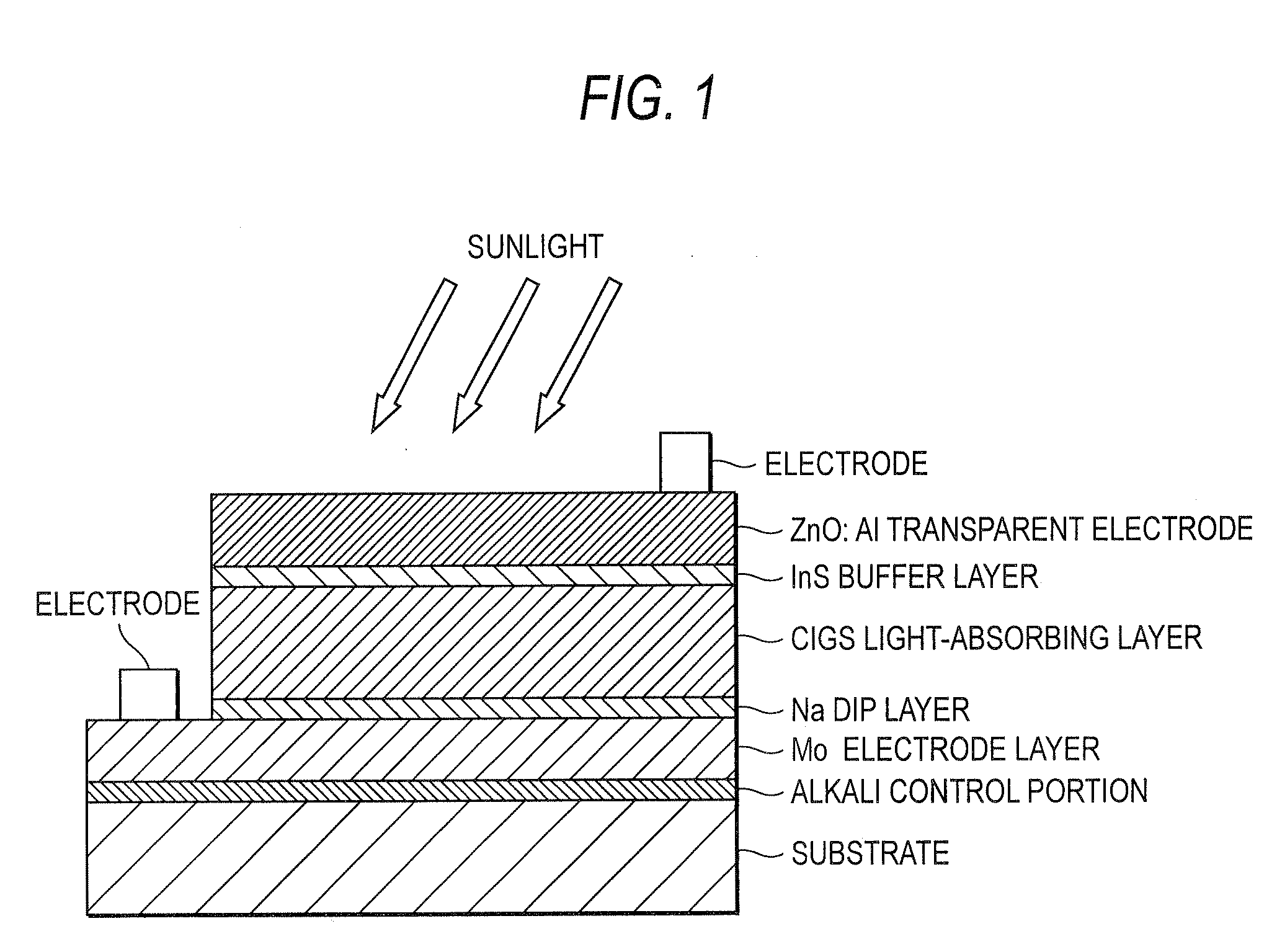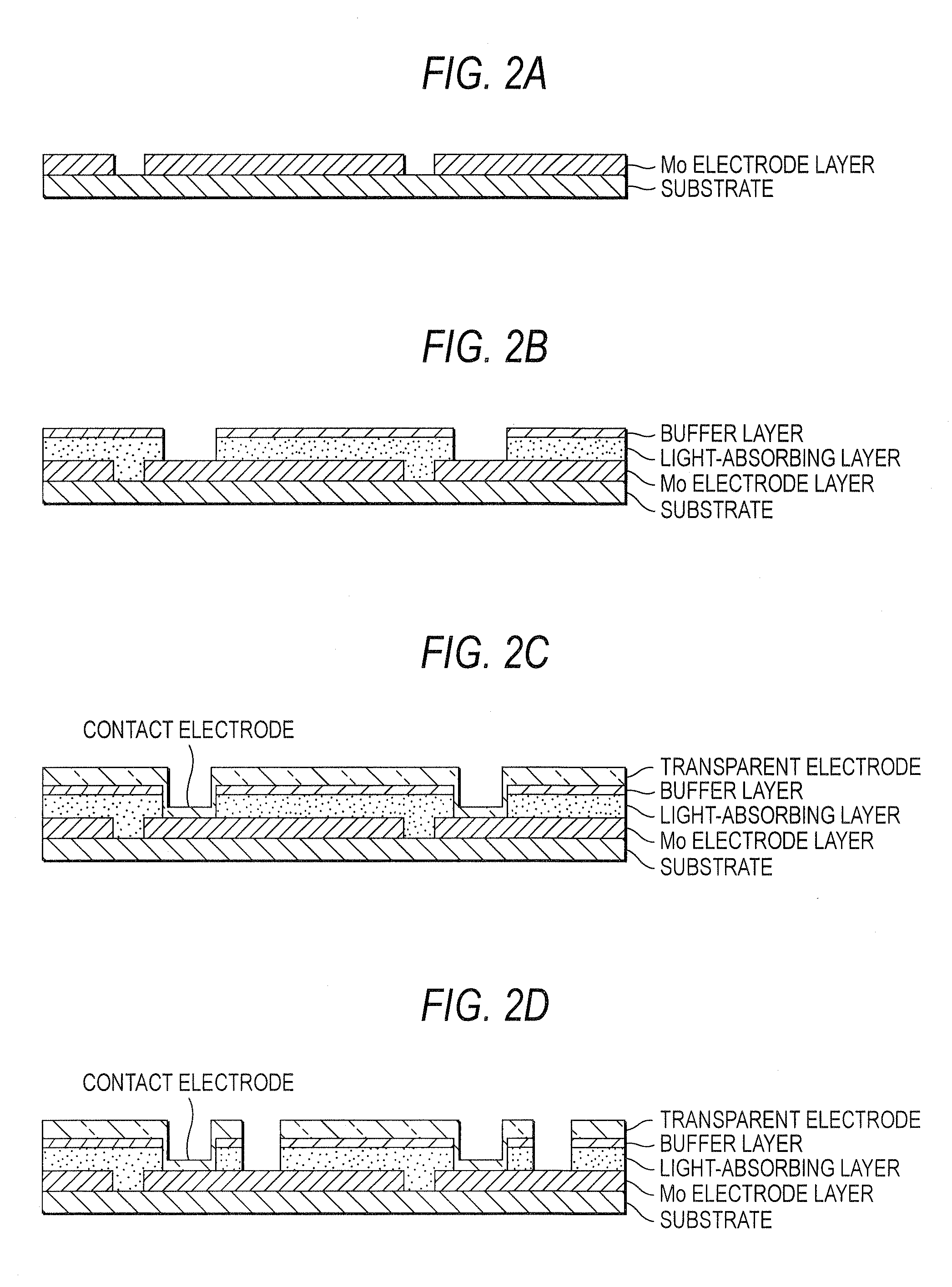Chalcopyrite solar cell and method of manufacturing the same
a solar cell and chalcopyrite technology, applied in the field of chalcopyrite solar cells, can solve the problems of low conversion efficiency, difficult to improve conversion efficiency, and extremely low generation efficiency (conversion efficiency), and achieve the effects of high photoelectric conversion efficiency, reduced dead space, and increased conductive ra
- Summary
- Abstract
- Description
- Claims
- Application Information
AI Technical Summary
Benefits of technology
Problems solved by technology
Method used
Image
Examples
example 1
[0069]FIG. 5 is a sectional view illustrating a chalcopyrite solar cell according to the invention. The same reference numerals denote the same parts as the conventional art. In the chalcopyrite solar cell of the invention, a single unit cell (herein, referred to as “a unit cell”) is formed out of a lower electrode layer (Mo electrode layer) 2 formed on a substrate 1, a light-absorbing layer (CIGS light-absorbing layer) 3 including copper, indium, gallium, and selenium, a high-resistance buffer layer thin film 4 formed of InS, ZnS, CdS, and the like on the light-absorbing layer thin film, and an upper electrode thin film (TCO) 5 formed of ZnOAl and the like. In order to connect the unit cell, a part of a contact electrode 6 connecting the upper electrode and the lower electrode is formed to overlap with a dividing line of the lower electrode 2 formed by a first scribing. That is, the contact electrode 6 is formed between the adjacent lower electrodes 2, 2 and on one of the adjacent ...
example 2
[0096]In the conventional scribing, it is required to perform the second scribing so as to form the dead space at some distance from the scribing line formed by the first scribing and required to perform the third scribing so as to form the dead space at some distance from the second scribing line. However, in the invention, since the contact electrode is formed which the light-absorbing layer is reformed so as to overlap a part thereof to the scribing line formed by the first scribing and the element division scribing (third scribing line) is formed so as to overlap a part thereof to the contact electrode, the monolithic series connection structure can be obtained without forming the dead space. In addition, since the differential level corresponding to the film thickness of the light-absorbing layer does not exist, the transparent electrode is not defeated.
[0097]In the experiment of the inventors, the generation efficiency (conversion efficiency) of the cell improved to about 11.1...
example 3
[0099]FIG. 15 is a sectional view illustrating a chalcopyrite solar cell according to the invention. The same reference numerals denote the same parts as the conventional art. In the chalcopyrite solar cell of the invention, a single unit cell (herein, referred to as “a unit cell”) is formed out of a lower electrode layer (Mo electrode layer) 22 formed on a substrate 21, a light-absorbing layer (CIGS light-absorbing layer) 23 including copper, indium, gallium, and selenium, a high-resistance buffer layer thin film 24 formed of InS, ZnS, CdS, and the like on the light-absorbing layer thin film, and an upper electrode thin film (TCO) 25 formed of ZnOAl and the like. In order to connect the unit cell, a part of a contact electrode connecting the upper electrode and the lower electrode is formed to be adjacent to a dividing line formed by a below-described element division scribing (third scribing). That is, the contact electrode 26 is formed on one lower electrode 22 separated from a s...
PUM
 Login to View More
Login to View More Abstract
Description
Claims
Application Information
 Login to View More
Login to View More - R&D
- Intellectual Property
- Life Sciences
- Materials
- Tech Scout
- Unparalleled Data Quality
- Higher Quality Content
- 60% Fewer Hallucinations
Browse by: Latest US Patents, China's latest patents, Technical Efficacy Thesaurus, Application Domain, Technology Topic, Popular Technical Reports.
© 2025 PatSnap. All rights reserved.Legal|Privacy policy|Modern Slavery Act Transparency Statement|Sitemap|About US| Contact US: help@patsnap.com



